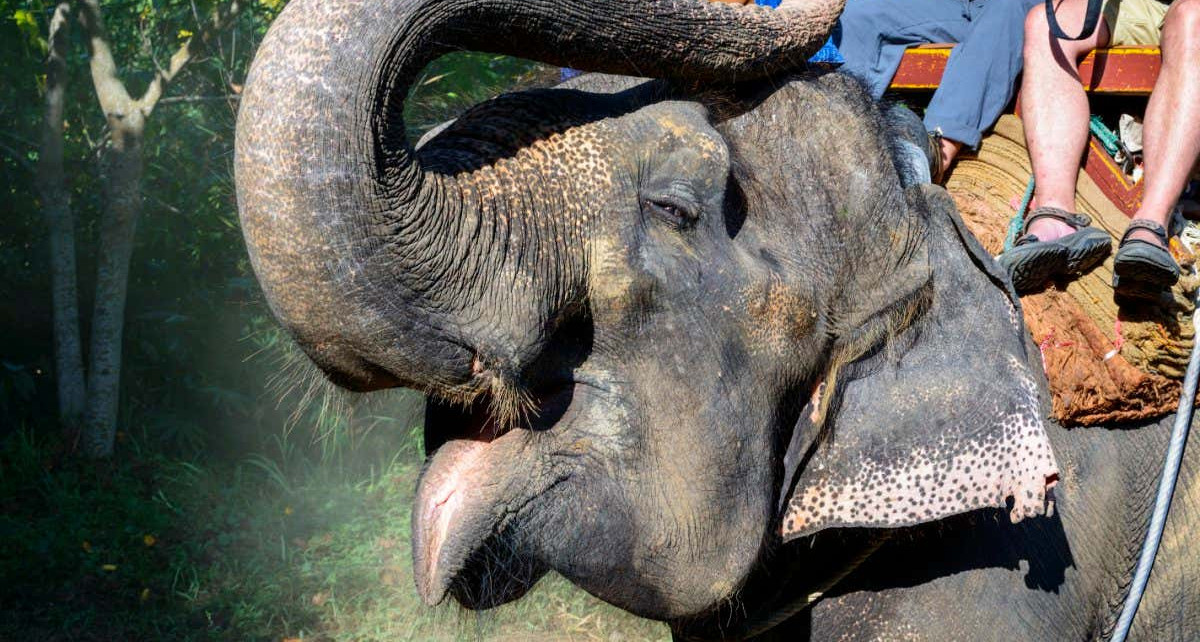Tourists ride on elephant in Chiang Mai, Thailand aphotostory/Getty Images
More than half the elephants in multiple Thai tourist facilities have nervous tics that may reflect anxiety, frustration or boredom.
The involvement of scientists in the elephant tourism industry has led to improvements in welfare, but many captive Thai elephants still develop repetitive behaviours called stereotypies, which are similar to nervous tics.
Pakkanut Bansiddhi at Chiang Mai University in Thailand and her colleagues observed the behaviour of 283 Indian elephants (Elephas maximus indicus) in 20 tourist facilities in Thailand’s Chiang Mai province where elephants give tourists rides, walk side by side with them and participate in shows.
The team found that 57 per cent of these elephants showed repetitive behaviours, including swaying side to side, weaving or pacing around, bobbing their heads, making useless limb movements and rocking back and forth on their feet, at least once in a 15-minute period. This might be their way of dealing with stressful situations like separation from family members or being restrained in chains, or even coping with boredom, says Bansiddhi.
On average, the elephants did these things about six times in that period. The highest prevalence was in elephants aged between 4 and 10. Those younger than 3 and older than 50 were least likely to show these behaviours. Bansiddhi says this is more or less consistent with the statistics her team calculated from direct interviews with 181 mahouts, or elephant handlers, on the animals’ behaviour.
“I’m surprised the figures are not higher than that,” says Andrew McLean at the Human Elephant Learning Programs foundation in Australia. “Wherever they chain elephants, there are almost always locomotor stereotypies.”
Mahouts generally separate young elephants from their mothers when they are 3 or 4 years old. Before that, the youngsters may experience relatively little stress, says Bansiddhi. But after the separation, their tics could reflect how anxious they are in their new situation. Older elephants may have simply “learned to cope better with the stress in their environment”, she says.
McLean, however, wonders if older elephants have reached a state called learned helplessness, in which animals give up trying to cope.
Journal reference: Applied Animal Behaviour Science, DOI: 10.1016/j.applanim.2021.105456
Sign up for Wild Wild Life, a free monthly newsletter celebrating the diversity and science of animals, plants and Earth’s other weird and wonderful inhabitants
More on these topics:




